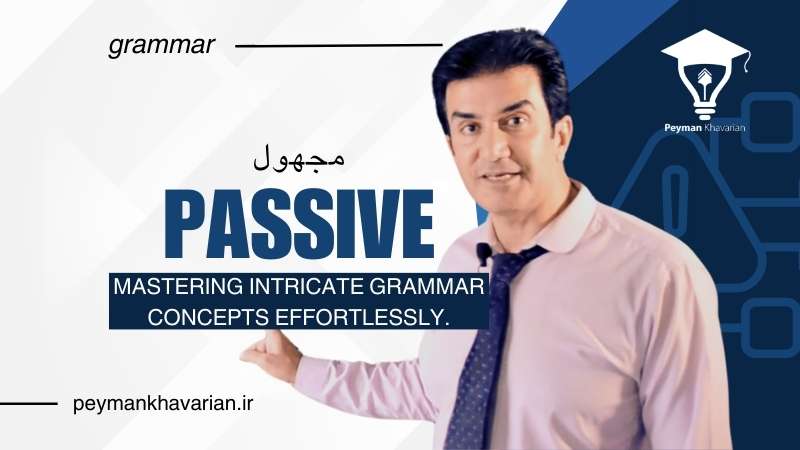گرامر و دستور زبان Passive مجهول

1. Present Simple Passive: The present simple passive is formed with the present tense of the verb ‘to be’ (is, am, are) + past participle. For example, “The book is read by Mary.”
4. Present Continuous Passive: The present continuous passive is formed with am/is/are + being + past participle. For example, “The book is being read by Mary.”
5. Past Continuous Passive: The past continuous passive is formed with was/were + being + past participle. For example, “The book was being read by Mary.”
6. Present Perfect Passive: The present perfect passive is formed with has/have + been + past participle. For example, “The book has been read by Mary.”
7. Past Perfect Passive: The past perfect passive is formed with had + been + past participle. For example, “The book had been read by Mary.”
8. Future Perfect Passive: The future perfect passive is formed with will have + been + past participle. For example, “The book will have been read by Mary.”
Remember, the passive voice is used when the focus is on the action, not who or what is performing the action. It’s often used in formal or scientific texts.
1. حال ساده مجهول: حال ساده مجهول با استفاده از حال فعل “بودن” (is, am, are) + صفت مفعولی ساخته میشود. برای مثال، “کتاب توسط مری خوانده میشود.”
2. گذشته ساده مجهول: گذشته ساده مجهول با استفاده از گذشته فعل “بودن” (was, were) + صفت مفعولی ساخته میشود. برای مثال، “کتاب توسط مری خوانده شد.”
3. آینده ساده مجهول: آینده ساده مجهول با استفاده از will + be + صفت مفعولی ساخته میشود. برای مثال، “کتاب توسط مری خوانده خواهد شد.”
4. حال استمراری مجهول: حال استمراری مجهول با استفاده از am/is/are + being + صفت مفعولی ساخته میشود. برای مثال، “کتاب توسط مری در حال خوانده شدن است.”
5. گذشته استمراری مجهول: گذشته استمراری مجهول با استفاده از was/were + being + صفت مفعولی ساخته میشود. برای مثال، “کتاب توسط مری در حال خوانده شدن بود.”
6. حال کامل مجهول: حال کامل مجهول با استفاده از has/have + been + صفت مفعولی ساخته میشود. برای مثال، “کتاب توسط مری خوانده شده است.”
7. گذشته کامل مجهول: گذشته کامل مجهول با استفاده از had + been + صفت مفعولی ساخته میشود. برای مثال، “کتاب توسط مری خوانده شده بود.”
8. آینده کامل مجهول: آینده کامل مجهول با استفاده از will have + been + صفت مفعولی ساخته میشود. برای مثال، “کتاب توسط مری خوانده شده خواهد بود.”
به یاد داشته باشید، صفت مفعولی زمانی استفاده میشود که تمرکز بر روی عمل است، نه اینکه چه کسی یا چه چیزی عمل را انجام میدهد. این زمانی است که معمولاً در متون رسمی یا علمی استفاده میشود







دیدگاهتان را بنویسید